Flowers are beautiful, bringing a splash of color to our gardens and veggie patches. But there’s so much more to them than just beauty alone.
Flowers play a key role in our ecosystem, they can be edible, and they are perfect for attracting beneficial insects and other small helpful animals. This is especially true in the case of pollinators.
The functioning of our ecosystem rests on the tiny backs of these pollinators – a big burden for their little shoulders to bear! In fact, we rely on pollinators to help produce as much as one-third of our food.
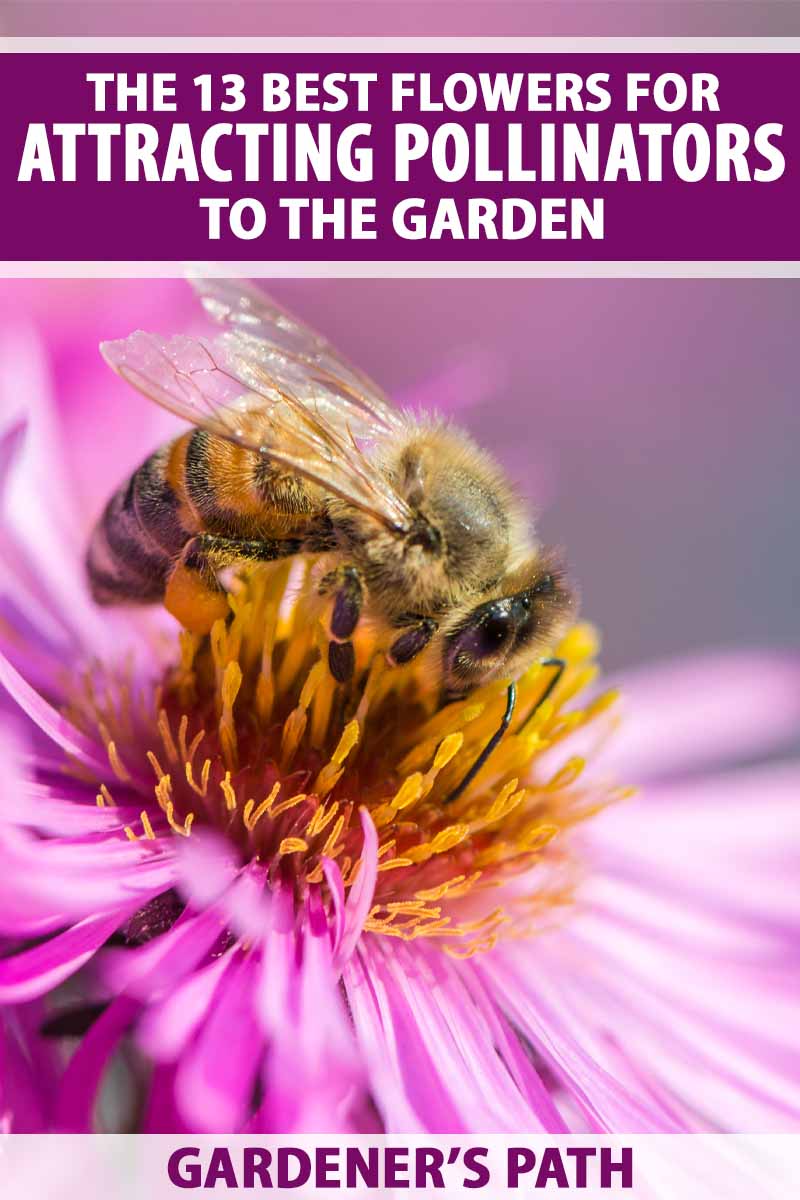
We link to vendors to help you find relevant products. If you buy from one of our links, we may earn a commission.
So, if there’s anything we can do to give them a helping hand, we definitely should!
Read on to find out more about the beautiful array of blooms you can plant in your garden to help your pollinators, and your plants. The following are 13 of our top picks.
Our Top Selections
1. Borage
Also known as a starflower thanks to its attractive star-shaped blue flowers that are beloved by both people and pollinating insects alike, borage provides ample sweet nectar, which is perfect for bees.
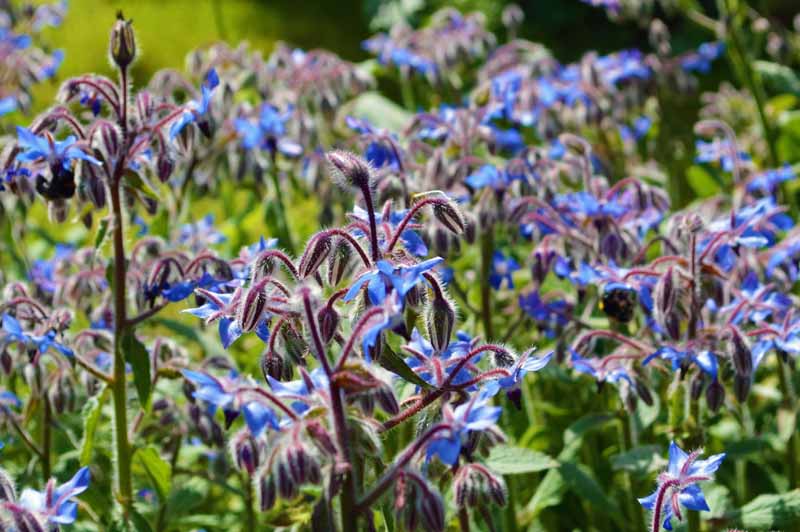
It has lovely soft green foliage, and what’s great about this flower is that is self-seeds, so growing it is very low maintenance.
Another great thing about this plant is it is not only pretty, but functional too. The seeds, leaves, and flowers are all edible, and often used in culinary and herbal applications.
Borage seeds are available in a variety of quantities from Eden Brothers.
Read more about adding borage to your garden here.
2. Butterfly Bush
As the name may imply, butterfly bushes are an excellent choice for attracting butterflies (and hummingbirds) to your backyard.
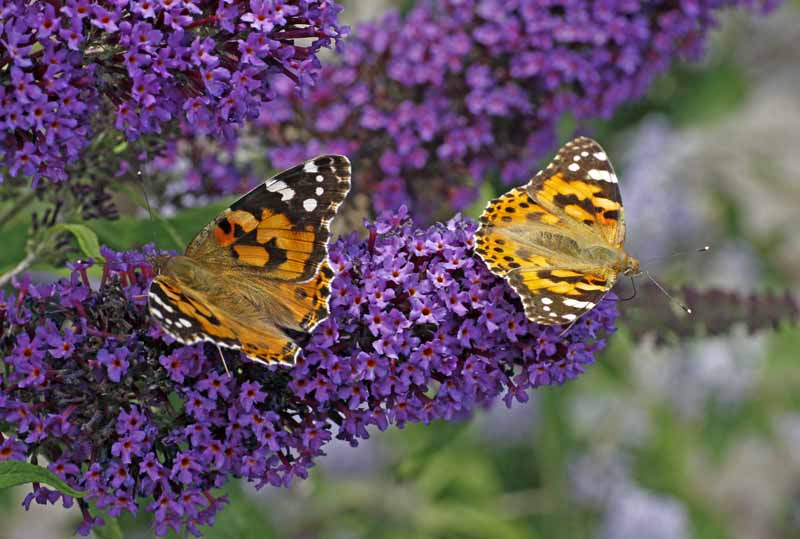
Purple, lavender, pink, or white blooms unleash lovely fragrance in the spring and summer and they can be grown in Zones 5 to 9. And unlike annuals, these are woody shrubs that can last decades with the proper care and occasional pruning.
You’ll need lots of room though, as they reach heights of eight to 10 feet and grow to about the same size in circumference.
Nature Hills Nursery has a wide selection of colors and cultivars to choose from.
Find tips and tricks for growing butterfly bushes here.
3. Coneflower
Also known as Echinacea, you’ll likely see butterflies surrounding this plant’s two-foot-tall flower stalks, enjoying a drink of their sweet nectar.

The blossoms also attract a range of smaller beneficial insects such as bees. Because of their size, these flowers are best positioned in perennial borders adjacent to a vegetable garden.
A variety of coneflower plants are available from Burpee, including a ‘Paradiso Mix,’ which blooms in a variety of colors.
Read more about growing echinacea here.
4. Cow Parsnip
Thanks to the large size of its compound umbels (a fancy way of describing a certain kind of flower cluster which is characteristic of the parsley family), the cow parsnip is one of the best sources of nectar and pollen for a wide variety of pollinators, especially small bees and wasps.

Also known as Indian celery, Heracleum lanatum is an elegant white-blossomed perennial that’s native to North America. It grows easily in a range of habitats, including woodlands, forest clearings, and grasslands.
Seeds are available via Amazon.
5. Dahlia
Ah, delightful dahlias. From deep red to delicate pink, this bushy, herbaceous flower is one of my favorites.
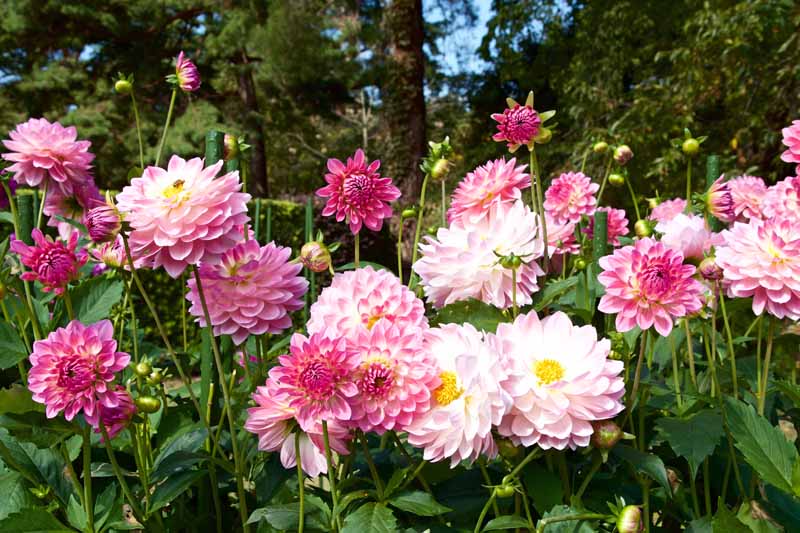
However, it’s important to get the right variety of dahlias to help your garden friends. You won’t have so much success attracting insects with “pom-pom” or “cactus” varieties, as they have been bred to have petals that are too close together for pollinators to access.
Instead, choose the more open types of dahlias, such as the simple single or semi-double flowered types, which are hardy and low-maintenance plants that pollinators love.
Burpee stocks over 40 varieties so there’s a color, shade, and shape that will fit nearly every palette.
Learn how to grow dahlias in your garden here.
6. Daisy
The daisy is very much the flower of my youth, with many hours of my life lost (well-spent, I would argue…) to making daisy chains in the schoolyard. But this humble flower is also a prime bee and butterfly attractor.
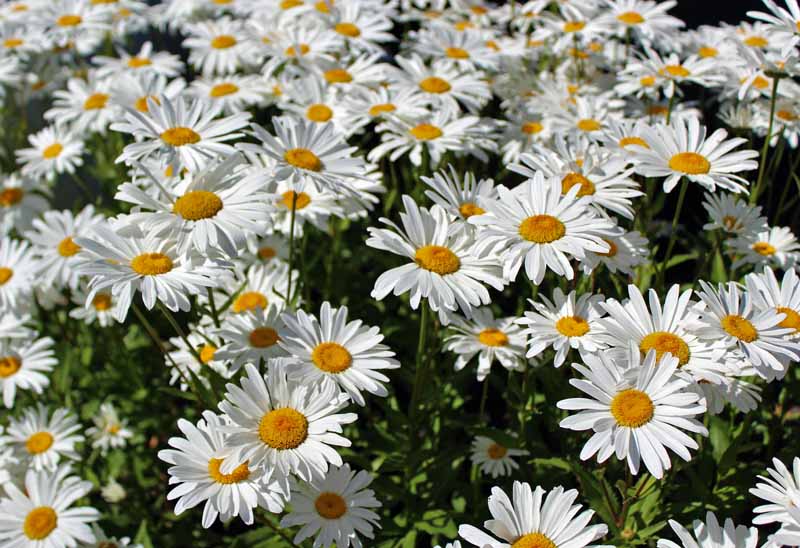
Shasta daisies, with the classic white and yellow appearance usually associated with this flower, are particularly adept at attracting helpful flying friends. But daisies also come in beautiful vibrant shades of yellow, pink, and more.
Long-blooming ‘Becky’ Shasta daisy plants are available from Nature Hills Nursery.
Learn more about painted, Swan River, African and all other types of daisies.
7. Dandelion
Why do away with your dandelions? Each time I see someone applying pesticides to get rid of this beautiful and ecologically important plant, I inwardly cringe.
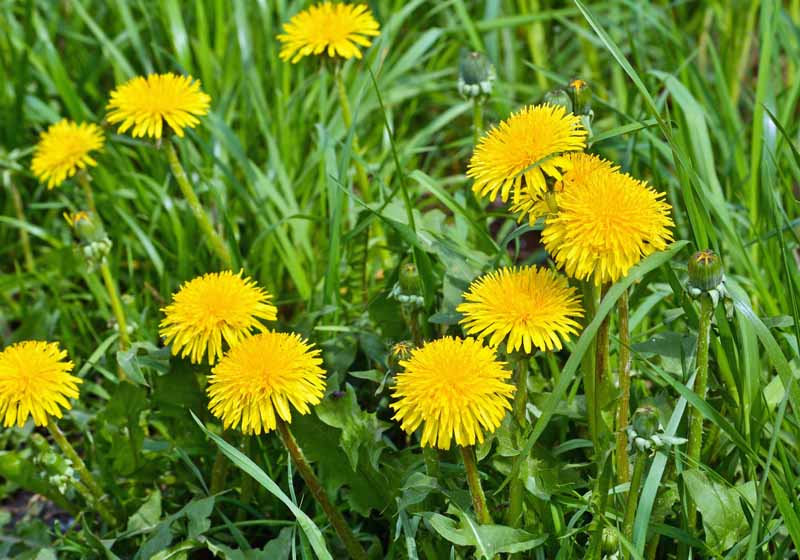
Dandelions are one of the easiest, hardiest plants that offer a surefire way to attract beneficial insects to your garden. Rather than getting rid of these bright yellow delights, we should be doing everything in our power to encourage them to grow!
Dandelions bloom over a long season, starting in early spring and continuing throughout the summer, providing much needed food for pollinators such as bees.
The only problem with these flowers really is that dandelions are much more popular with pollinators than they typically are with gardeners! I’m going to start a dandelion fan club and try to get some more support for this wonderful plant.
You can find packets of 100 dandelion seeds available at Earthbeat Seeds.
Read more about growing dandelions here.
8. Goldenrod
This flower is wonderful for keeping your creepy crawly friends happy past summer and into the fall. Whilst most flowers bloom in the summertime, this one starts blooming in late summer and continues well into autumn.

Planting late-season blooms like Solidago is key to keeping your new friends around, encouraging them to stay rather than moving on to greener pastures. Plus, goldenrod is perfect for bringing some color into your garden in the fall.
‘Fireworks’ goldenrod plants with vibrant yellow cascading flowers are available from Burpee.
Find tips on growing goldenrod here.
9. Lavender
Not quite a flower, not quite an herb, this perennial plant is nevertheless a must-have for attracting pollinating insects.

Bees go absolutely crazy for lavender, which also has other interesting properties that help with warding off unwanted insects, such as fleas, flies, and mosquitoes.
Lavender is also obviously a very pleasant smelling plant that can be dried and used to fragrance the home.
Seeds are available from Eden Brothers.
Learn how to grow lavender in your hardiness zone here.
10. Marigold
There is some controversy about this edible, annual, brightly colored flower. Some people claim that it actually repels bees. But in my experience, I’ve found the opposite to be true, with bees merrily visiting the marigolds along with a whole host of other friendly critters such as flies, moths, and butterflies.
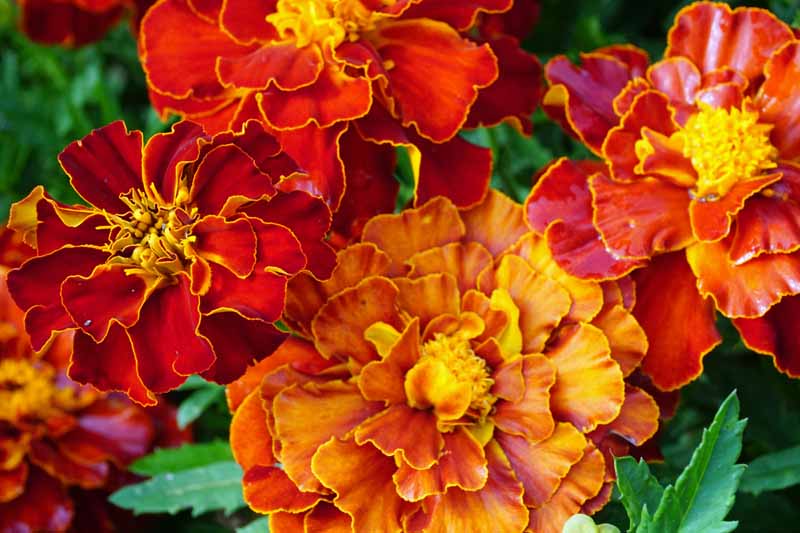
Marigold also comes with the added bonus of being excellent for improving soil health, and its roots are supposed to ward off disease-causing soil nematodes that often afflict tomatoes and other vegetables. Aim to buy varieties with open centers so insects can easily reach the pollen.
You can find a wide variety of different marigolds available from Burpee.
Read all about growing marigolds here.
11. Milkweed
Also known as butterfly weed, Asclepias are herbaceous perennial plants that are a magnet for butterflies including monarchs, who love to sip on their sweet nectar. And they’re not the only ones – wild and domestic bees, hummingbirds, and other pollinators also enjoy visiting this flower.
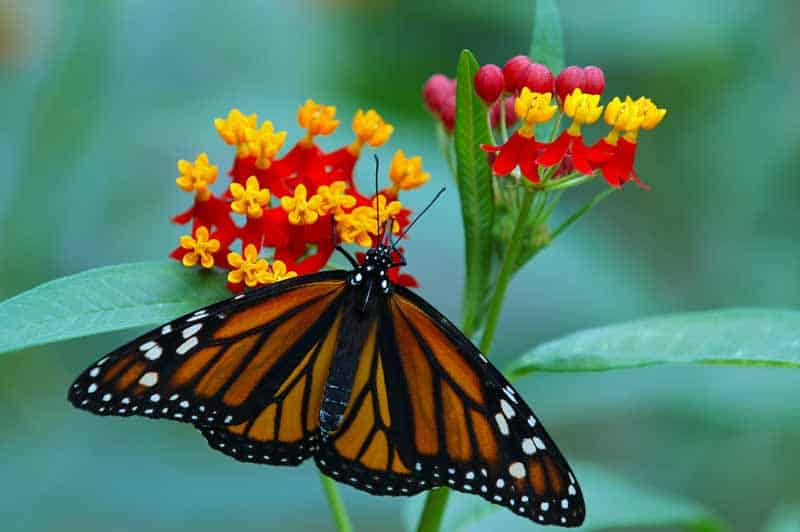
It is slightly challenging to grow from seed, requiring an early start indoors, although tubers are also available and a little easier to plant in spring.
Looking for a variety that thrives in hot weather? Orange and scarlet ‘Red Butterfly’ Asclepias is a beautiful option. Seeds are available from Burpee.
Learn more about why you should add milkweed to your garden here.
12. Snapdragon
The snapdragon is the ultimate bumblebee attractor. It has evolved unique ways to attract these pollinators, adapting its scent, color, and physical form to perfectly suit all of the bumblebee’s needs.
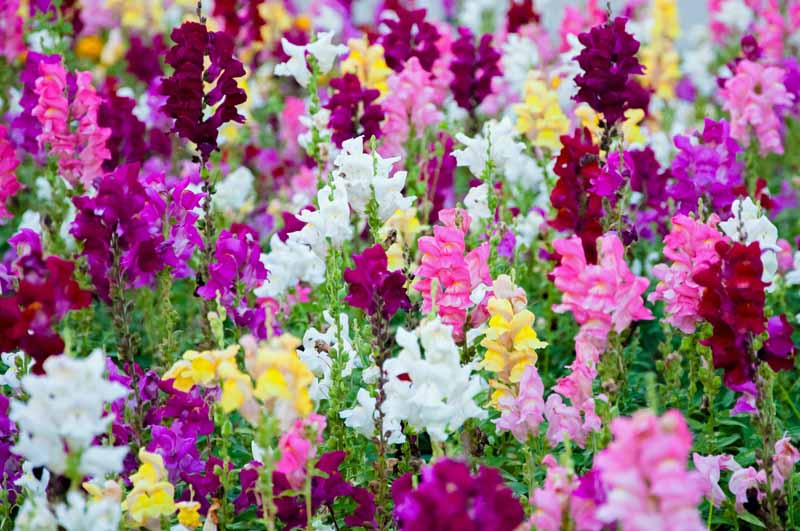
For instance, the snapdragon deliberately releases scent during the bumblebee’s most active hours during the day, which proves irresistible for the bee.
The colors of the snapdragon are also far from a random choice. Bees cannot see red, but can see yellow, blue, and ultraviolet. The way the patterns are arranged on each flower also act as a huge billboard screaming, “All you can eat, this way!”.
Also, the unique bell shape of the petals is adapted perfectly for the little bees to buzz in and out of.
In short, if you would like to bring more bumblebees into your garden (and who wouldn’t?), snapdragons are the way to go.
Various single color cultivars and combinations are available from Burpee.
Read our guide to growing snapdragon now.
13. Sunflower
The beautiful sunflower is perfect for attracting insects as well as birds, who adore their seeds. This is ideal because it’s important to attract all kinds of helpful critters to the garden, and birds also play a key role in pollination.

Another magnet for bees, these cheery flowers are sure to be a hit with many forms of wildlife in your garden.
Many different types of sunflower seeds are available from Eden Brothers, including the dwarf ‘Twilight Zone’ variety.
You can find our guide to growing sunflowers here.
Flower Power
Here’s to flower power! Garden blooms might look delicate and pretty, but they also play a vital role in the functioning of our ecosystems.
Have you had a go at planting any of these flowers in your garden? Let me know how you got on in the comments section below.
If you loved this article, be sure to check out these next:
- 17 Temperate Flowering Perennials That Will Grow Almost Anywhere
- 15 Flowering Ground Covers to Meet Landscaping Challenges
- 13 of the Best Evergreen Shrubs for Your Garden
© Ask the Experts, LLC. ALL RIGHTS RESERVED. See our TOS for more details. Originally published July 27, 2019. Last updated March 2, 2023 Uncredited photos: Shutterstock. Additional writing and editing by Allison Sidhu.
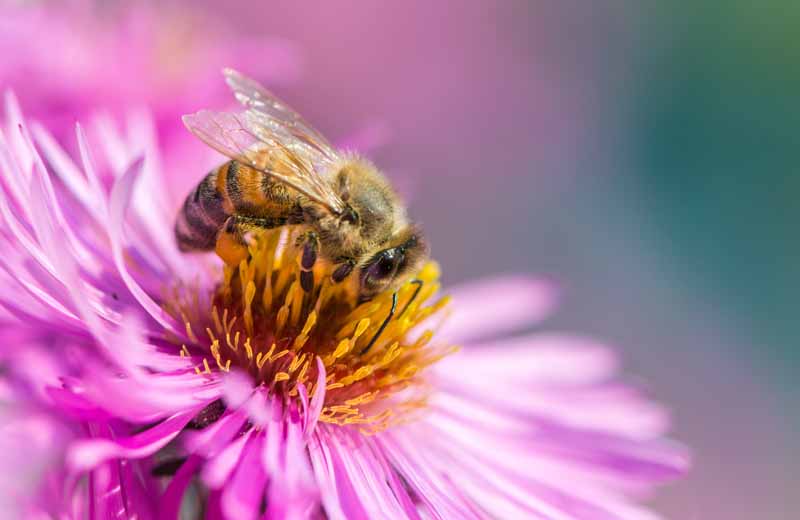
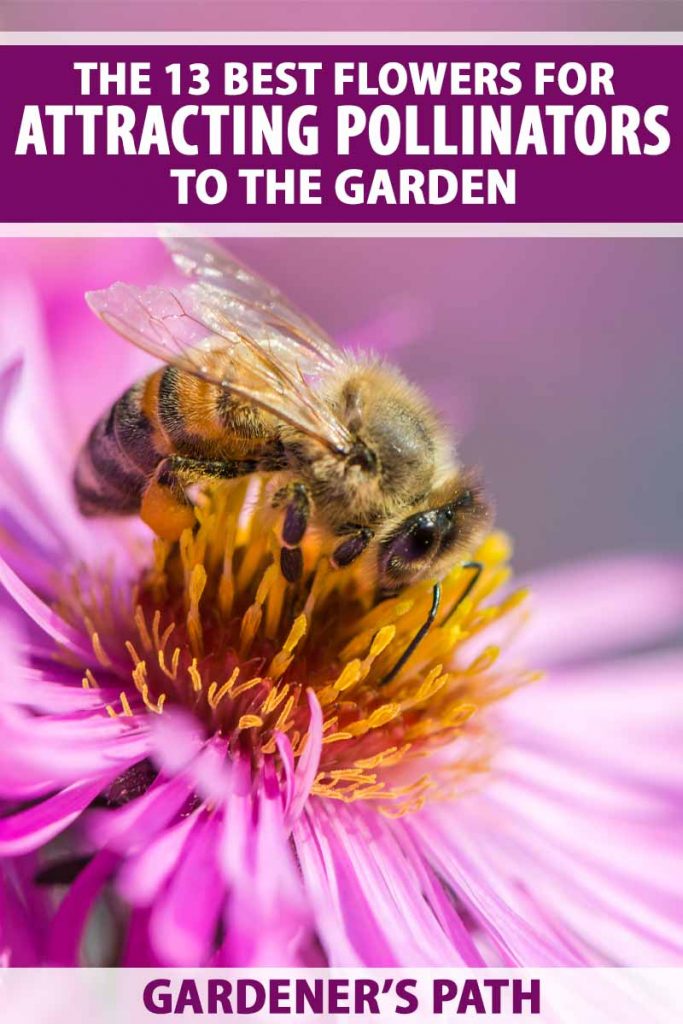

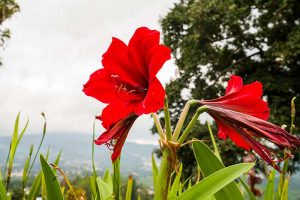
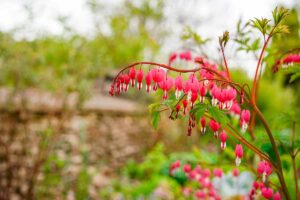
Hi Natasha,
I am interested in planting sunflower to attract bees and feed the poultry. I have 2.5 hectares in Heidelberg. Can you help me please?
Hi Kat, Laura Melchor here — I’m a writer at Gardener’s Path. Thank you for your question! The right type of sunflower will most definitely attract and help bees, butterflies, and sometimes hummingbirds. You’ll want to avoid hybrids that don’t produce pollen, which is pretty much any single-stem, single-bloom cultivar. Instead, choose a branching, nectar- and pollen-producing cultivar like ‘Lemon Queen,’ which is available from Burpee. This type of sunflower will not only attract bees, but it will also keep them fed and healthy, and coming back for more. ‘Lemon Queen’ produces multiple blooms on branching stems, which grow up… Read more »
Thanks for helping with my homework! 🙂
I’m not sure where your home is, so this comment may not be pertinent to the discussion. But just in case, native plants are always the best plants to attract pollinators. They are best suited to the environment and require less watering, saving that precious natural resource. Several of the plants you recommend to attract pollinators are not native to my area (Midwest US). Butterfly bush is beautiful and attracts many pollinators–but a healthier choice for the pollinators (and the environment) would be to plant a native, such as butterfly weed (a milkweed). It has clusters of gorgeous orange flowers… Read more »
Have you ever planted Cow Parsnip in a garden? In Alaska it is considered dangerous since any skin that comes in contact with bruised leaves of the plant can develop extreme painful blisters similar to poison oak. It can cause blindness if it gets in your eyes. An odd choice to recommend for a home garden.
This isn’t one that I would personally plant in a garden frequented by curious children. Though giant hogweed (Heracleum mantegazzianum) is known to cause an adverse skin reaction that is considerably worse, all parsnip relatives (including the edible species) should be cultivated cautiously, and with skin protection via gloves and long sleeves.
Hi natasha
i want to grow a butterfly bush!
Hi Amber, butterfly bushes are beautiful! Check out our guide to growing butterfly bushes for more information. Happy gardening!
Butterfly bushes are an invasive species. Plant a California Lilac instead!
Thanks for the feedback Beth. Since our readership is worldwide, in addition to providing information about US native species, we also discuss plants that can be grown in other locales where they are not considered invasive. If you’re interested in native species, check out out our guide to the best native wildflowers for the US and Canada. Happy gardening!
I was just curious to know if you’ve ever seen what I call a dandelion bush? The flowers and leaves look identical to a dandelion with the exception of the stalk forking many times so one plant can have many blooms on it. The seed looks like a normal dandelion seed as well, but most if not all the flowers go to seed – not the best plant to have around if you consider it a weed. As for me, I believe that where a plant grows is where it is supposed to be with a few exceptions, like tansy… Read more »
Can you share a photo Renee, and where are you located?
You will see gardeners and others sometimes refer to “bush dandelions” online, and there are actually several related species in the Taraxacum genus that go by this common name, aside from the common dandelion, T. officinale. True dandelions can produce several flowers as a time that emerge from a basal rosette, but they do not have a forking habit like you described.
Perhaps this is false dandelion, Hypochaeris radicata, also known as cat’s ear. These can have branching stems, and they can be distinguished by their hairy leaves.
Hi Renee, That is an excellent question! What you’re seeing however sounds like a totally different species. Dandelion stems always grow just one flower at the end of the stem. Another way to be sure it is a dandelion is that dandelions have hollow stems – some of the most common lookalikes on the other hand, don’t have hollow stems. The plant you are describing might be cat’s ear (Hypochaeris radicata) but there are many other dandelion lookalikes. If you want further help IDing your plant, feel free to post some photos (showing the stems, flowers, stems, and the whole… Read more »
Hi Renee did you ever find the answer to your question? To me it sounds very much like Hawksbit.
Leontodon https://g.co/kgs/Ymy9J3
Hi! Thank you for this list – however, I am somewhat taken aback about the inclusion of Butterfly Bush?! It is not a native pollinator plant – it is from China. It is very aggressive in spreading as its light seeds can travel for miles. Also, it does not provide enough critical nutrients. I feel that you should look into this plant and, hopefully, replace it with a native, not invasive, more nutritious plant – attraction is only PART of the scenario – children are attracted to candy stores, but that does not signify a healthy choice….
You’re welcome! You are correct – butterfly bush is not native to the US, and some varieties may be invasive in certain areas. We cover this in more detail in our guide to growing Buddleia. You may also be interested in reading our roundup of the best native wildflowers for the US and Canada, which covers native plants only.